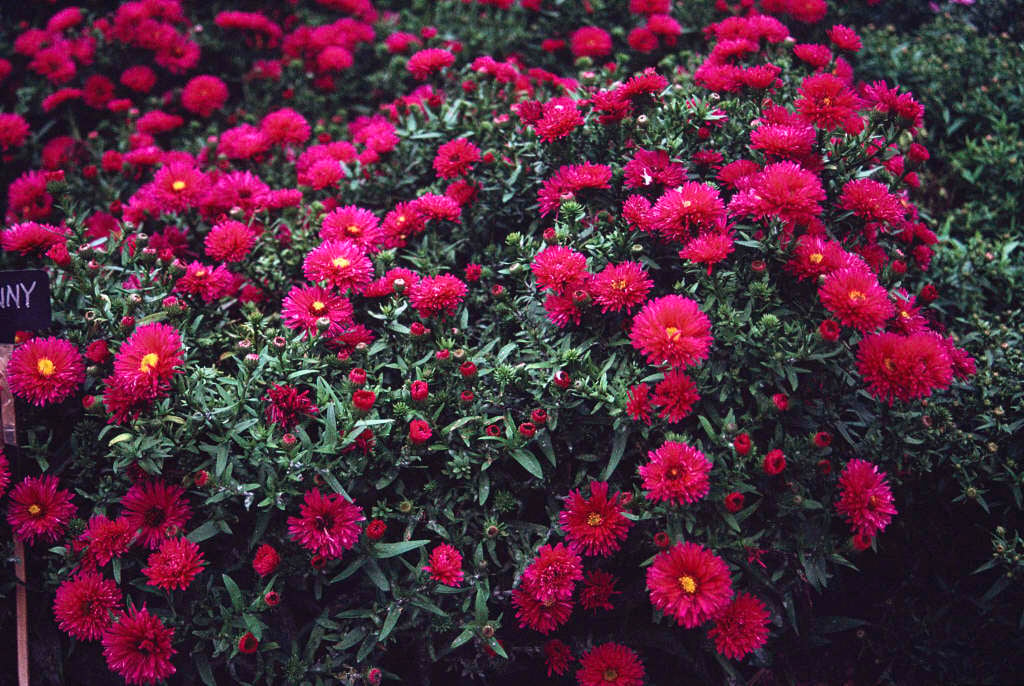Aster novi-belgii 'Jenny'
Michaelmas daisy 'Jenny'
A rhizomatous perennial about 30-40cm tall, forming a compact clump of erect stems bearing narrow leaves and panicles of reddish-purple, semi-double to double flowerheads to 5cm across, from late summer to autumn

Buy this plant
Size
Ultimate height
0.1–0.5 metresTime to ultimate height
2–5 yearsUltimate spread
0.1–0.5 metresGrowing conditions
Moisture
Moist but well–drainedpH
Acid, Alkaline, NeutralColour & scent
| Stem | Flower | Foliage | Fruit | |
| Spring | Green | |||
|---|---|---|---|---|
| Summer | Purple Red | Green | ||
| Autumn | Purple Red | Green | ||
| Winter |
Position
- Full sun
- Partial shade
Aspect
South–facing or North–facing or West–facing or East–facing
Exposure
Exposed or Sheltered Hardiness
H6Botanical details
- Family
- Asteraceae
- Native to GB / Ireland
- No
- Foliage
- Deciduous
- Habit
- Clump forming
- Genus
Symphyotrichum includes around 90 species of annuals, biennials and perennials, mostly spread through the Americas, that were formerly included within the genus Aster. Leaves are simple, lance-shaped and entire, but it is their daisy-like flowerheads that they are grown for; central disc florets are typically yellow, surrounded by strap-shaped ray florets in shades of pink, blue, purple or white
- Name status
Accepted
How to grow
Cultivation
Thrives in fertile, moist but well drained soil in sun or partial shade. Plants will benefit from mulching in autumn, and division every few years to maintain vigour. Will not tolerate waterlogging in winter, and may need support, see staking (perennials). For more advice see aster cultivation
Propagation
Propagate by division in spring, replanting only vigorous young shoots
Suggested planting locations and garden types
- Cottage and informal garden
- City and courtyard gardens
- Coastal
- Patio and container plants
- Cut flowers
- Flower borders and beds
Pruning
Cut back in late autumn
Pests
May be susceptible to slugs and snails on new growth, and to aphids, leaf and bud eelworms and tarsonemid mite
Diseases
May be susceptible to Fusarium wilt, powdery mildews, grey moulds and leaf spots
Get involved
The Royal Horticultural Society is the UK’s leading gardening charity. We aim to enrich everyone’s life through plants, and make the UK a greener and more beautiful place.